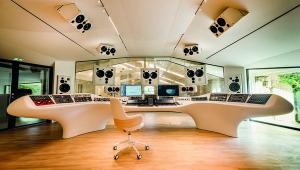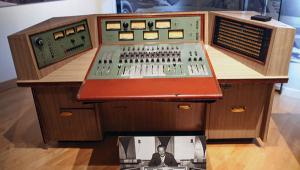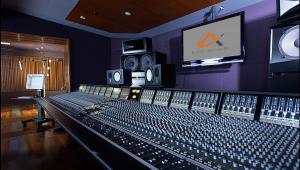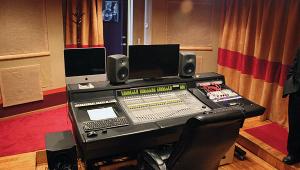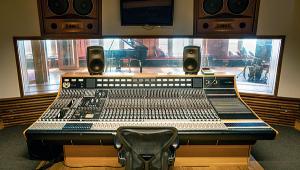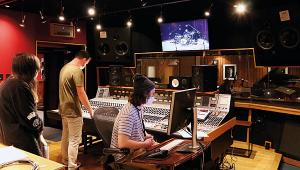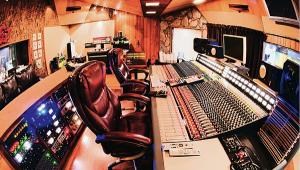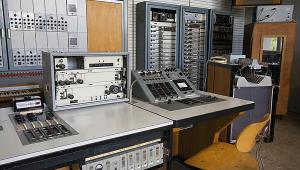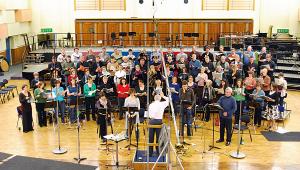Third Man Page 2
Fresh Master
Once the V-O-G had settled in and been tamed – it's a tricky customer to keep going apparently – White and Young took it onto The Tonight Show Starring Jimmy Fallon on the 13th of May 2014 where they recorded a version of Willie Nelson's 'Crazy' and the pair explained the process to the audience, announcing that, for $15 (now $20), the Third Man Recording Booth was available for one and all to have a swing at it.
'The only machine of its kind in the world that is both operational and open to the public....'
All you need do, they explained, is feed in the special tokens from the Third Man Novelties Lounge, and pull the lever. A fresh master is instantly dropped onto the spindle, the cutting needle lowers onto the outer edge, a red light flicks on in the booth, and you're away with around 144 seconds to emulate untold thousands of other previous users and achieve your very own recording, which, like the amateur recording stars of old, you're encouraged to mail to a loved one.
Third Man even offers custom-printed envelopes and postage stamps while, across the room, the Dip 'n' Dunk photo booth can shoot you a photo strip to mail with your record. Users are also able to convert their disc to MP3 and have it posted on the Record Booth Soundcloud playlist, a living library on the Third Man Records website.
Fast 'N' Faithful
Today's V-O-G records are cut from polycarbonate. Back in the day, though, they were made of a cardboard composite sprayed with acetate or covered in some kind of plastic, and the grooves were cut with a steel needle. Today they're embossed with a tungsten carbide needle to reduce the surface noise.
For Young's album, the individual discs were cut then transferred to 1in two-track using a 1953 Scully lathe at Third Man that was previously used by the legendary King Records, home of James Brown. The lathe is important in White's overall recording set-up because it allows Third Man to cut direct-to-acetate – 'no overdubs, no re-dos, no starting and stopping.'

On the 19th of April 2014 it was this lathe that enabled the creation of the fastest record ever made. In front of a small audience at Third Man's tiny concert hall, White and his band walked on stage and played 'Lazaretto' (side A) and 'Power Of My Love' (side B) live, straight onto the Sully Lathe housed at the back of the room. The acetates were then taken to United Record Pressing, to be copied and packaged. Three hours and 55 minutes from the band taking the stage, the 45rpm single was on sale at the Third Man store
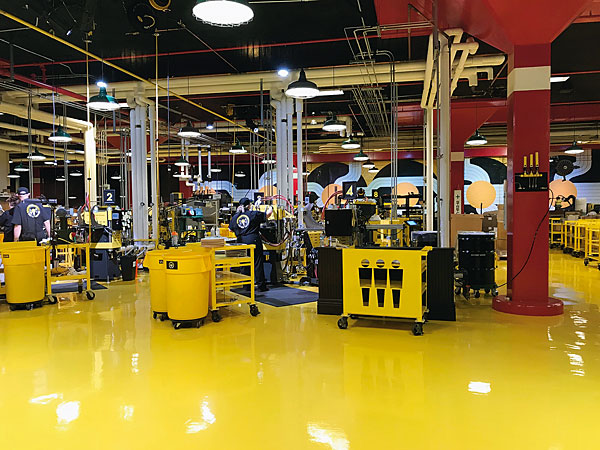
And it's this philosophy – fast and faithful to reality – that fuels the studio White had built in Nashville in 2009. It's nothing fancy: a small facility with a 16-channel, 1073-based Neve console which also has four Neve 2054 compressor modules; two Studer A800 tape recorders; an Ampex ATR-102 1in recorder; a selection of mics; and outboard equipment. The latter includes Urei 1176, Teletronix LA-2A, API 2500, Fairchild and Neve 33609 compressors; GML 8200 and API-550 series EQs; and reverbs, delays and echos from Fulltone, Master Room, Moog, Roland, Furman and EMT.
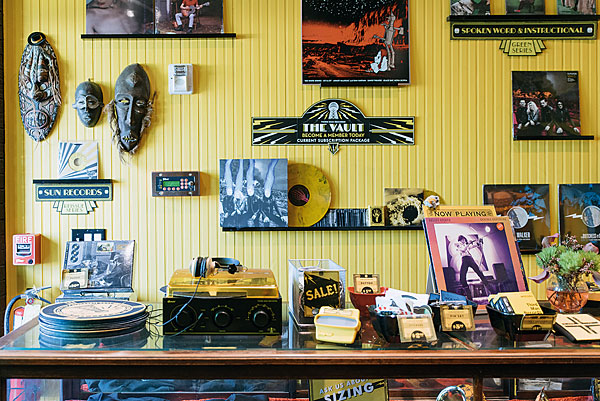
'I became incredibly involved in choosing the equipment', says White. 'I've slowly been collecting things that I've used over the years and that I thought sounded great. The studio is very small, so musicians are pushed close together.'
Analogue Rules
'Sometimes in a big studio, the drummer may be 40ft away from the bass player, each with baffles around them, and the result is that they're not really playing together. I wanted everyone in everyone else's face, working closely together.'
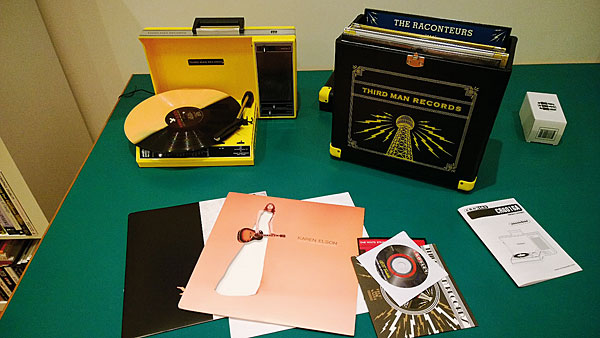
'Analogue is the medium of all the kinds of music that I am really fond of', he continues. 'Form follows function. You have to ask yourself what you are trying to accomplish. What are you trying to make it sound like? When you're recording and producing, you're aiming for something and, if you want vibe, warmth, soulfulness, things like that, you'll always be drawn to analogue.
'I was shocked by how many people were upset by the Neil Young record, because it sounded scratchy and lo-fi. But they missed the point completely. The sound of analogue is ten times better than digital...
'In the analogue world, you don't mess with the recording that much. Because it's on tape, you tend to leave it alone. But when it's in Pro Tools, people keep clicking and editing and removing pops and buzzes and they place the drums on a grid to get it in perfect timing. All those moves just suck the soul and life out of a song.'


